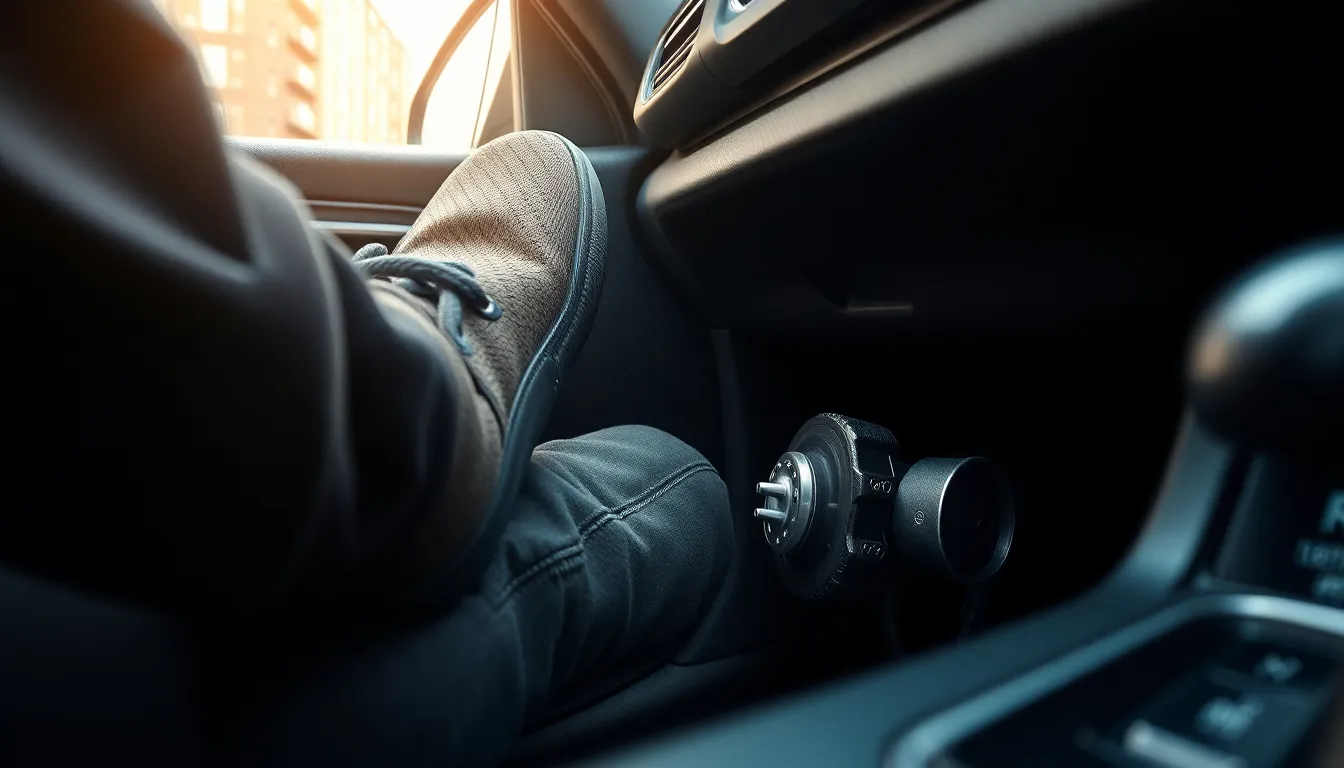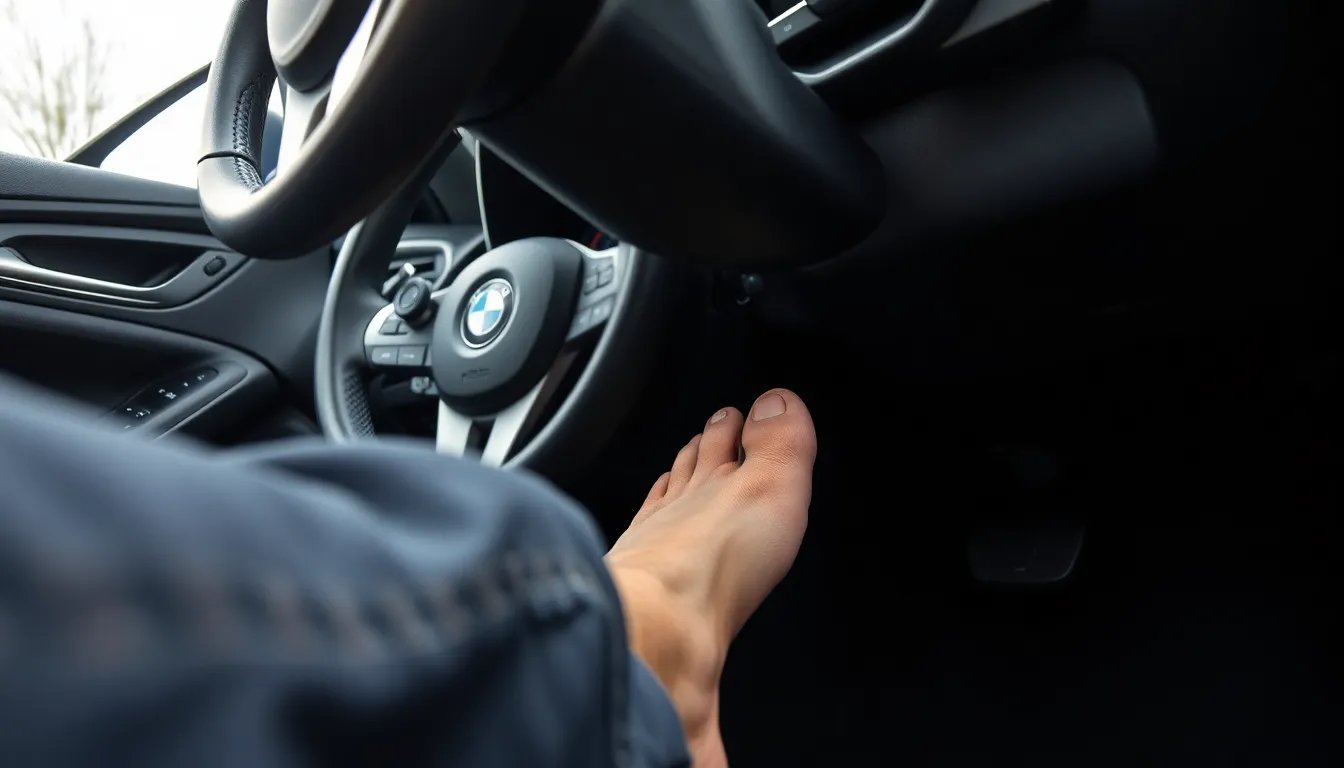Table of Contents
ToggleDriving can be a complex experience, especially for new drivers. One of the most crucial aspects of operating a vehicle is understanding the pedals. Among them, the brake pedal plays a vital role in ensuring safety on the road. Knowing which pedal to use in various situations can make all the difference.
The brake pedal is typically located on the left side of the accelerator pedal. It’s essential for slowing down or stopping the vehicle, giving drivers control over their speed. In this article, we’ll explore the importance of the brake pedal, how it functions, and tips for using it effectively. Understanding this fundamental component of driving not only enhances safety but also boosts confidence behind the wheel.
Understanding Brake Pedals
Brake pedals play a vital role in vehicle operation, offering drivers essential control over speed and safety. Familiarity with the different functions and types of brake pedals enhances driving confidence.
Function of the Brake Pedal
The brake pedal initiates the vehicle’s braking system, converting foot pressure into hydraulic force that slows or stops the vehicle. Pressing the brake pedal activates the brake pads, which clamp down on the rotors. This action generates friction, reducing wheel rotation. Effective use of the brake pedal contributes to safe stopping distances, ensuring drivers can respond promptly to road conditions or obstacles.
Types of Brake Pedals
Different types of brake pedals cater to varying vehicle designs and driver preferences. Key types include:
- Standard Brake Pedal: Common in most vehicles, it features a traditional hydraulic system for braking.
- Anti-lock Brake System (ABS) Pedal: Includes sensors to prevent wheel lockup, providing better control during abrupt stops.
- Electronic Brake Pedal: Utilizes electronic controls for smoother braking, often found in hybrid and electric vehicles.
- Dual Circuit Pedal: Offers independent braking for each set of wheels, enhancing safety in case of hydraulic failure.
Drivers should recognize the specific type of brake pedal in their vehicle to utilize its features effectively.
Importance of the Brake Pedal

The brake pedal plays a vital role in safe driving and overall vehicle operation. Its correct usage enhances a driver’s control and responsiveness, contributing to safer roads.
Safety Considerations
Safety remains the top priority when using the brake pedal. The brake system’s efficiency directly impacts a vehicle’s stopping distance, which averages around 120-140 feet at 60 mph. Drivers must ensure their brake pedal functions correctly to avoid accidents. Routine checks of the brake fluid levels and brake pads prevent unexpected failures. Additionally, understanding common warning signs, such as brake squeaking or vibration upon application, informs drivers of necessary maintenance.
Control and Responsiveness
Control and responsiveness stem from the brake pedal’s design and function. The brake pedal converts foot pressure into hydraulic force, activating brake pads that create friction against rotors. This mechanism allows drivers to stop or slow down quickly when necessary. The responsiveness of the brake pedal varies with different systems, such as traditional hydraulic or anti-lock brake systems (ABS), which prevent wheel lock-up during hard braking. A driver familiar with their vehicle’s brake type can modulate pressure effectively, ensuring precise control over stopping power, enhancing overall driving confidence.
How to Use the Brake Pedal
Using the brake pedal correctly is essential for vehicle safety and control. Understanding proper techniques and being aware of common mistakes significantly enhance driving performance.
Proper Techniques
- Foot Positioning: Place the right foot comfortably on the brake pedal, ensuring it can pivot easily from the accelerator when needed.
- Smooth Application: Press the brake pedal gradually rather than slamming it. Smooth application provides better control and prevents abrupt stops.
- Look Ahead: Keep an eye on the road ahead. Anticipating stops or slowdowns allows for timely braking.
- Use Heel-Toe Method: For manual transmission vehicles, practice the heel-toe method. This involves using the heel to brake while simultaneously using the toes to operate the clutch, providing seamless gear changes.
- Brake Gently in Turns: When making turns, apply the brake beforehand to maintain balance. Avoid braking mid-turn, as it can destabilize the vehicle.
- Monitor Distance: Maintain a safe following distance of at least three seconds from the vehicle ahead. This adjustment allows for appropriate braking when necessary.
Common Mistakes to Avoid
- Over-Braking: Excessive pressure on the brake pedal can lead to wear on brake pads and diminish overall braking efficiency.
- Neglecting Routine Checks: Ignoring regular checks of brake fluid levels can result in compromised braking performance. Regular maintenance is crucial.
- Braking Late: Waiting too long to apply brakes increases stopping distances and elevates the risk of accidents. Immediate reaction improves safety.
- Using Both Feet: Avoid using both feet for braking and accelerating; this method can lead to confusion and accidental pedal overlap.
- Distraction: Removing focus from the road while engaging the brake can lead to miscalculations. Stay attentive to surroundings.
Understanding these techniques and avoiding common mistakes enhances overall driving safety and vehicle control.
Brake Pedal Maintenance
Brake pedal maintenance ensures optimal performance and safety. Regular inspections and awareness of wear signs contribute to effective braking systems.
Regular Checks and Servicing
Routine checks enhance the reliability of the brake system. Inspect brake fluid levels every month, as low fluid can impact braking efficiency. Replace brake fluid every 2 years or as specified by the vehicle manufacturer to prevent moisture buildup and maintain hydraulic performance. Assess brake pads for thickness; if they’re worn down to 3 millimeters or less, replacement is necessary. Schedule professional servicing at least once a year for thorough inspections of the entire braking system, including calipers, rotors, and hoses. Keeping maintenance records helps track service history and anticipates future needs.
Signs of Wear and Damage
Recognizing signs of wear and damage is crucial for timely repairs. Listen for squeaking or grinding noises while braking; these often indicate worn brake pads. Inspect for vibration or pulsation in the brake pedal during braking, which can signal warped rotors. Observe the brake warning light on the dashboard; illumination often suggests a system malfunction or low fluid levels. Check for leaks under the vehicle; fluid spots may indicate a failure in brake lines or hoses. Monitoring these signs allows for proactive maintenance, ensuring the brake pedal functions effectively at all times.
Understanding the brake pedal’s role is essential for every driver. It’s not just about stopping the vehicle; it’s about ensuring safety and control on the road. By mastering the techniques for effective brake use and recognizing the importance of maintenance, drivers can enhance their driving experience and confidence.
Regular checks and awareness of potential issues can prevent accidents and ensure the braking system operates smoothly. Familiarity with the specific type of brake pedal in a vehicle allows for better modulation of pressure, leading to safer stops. With the right knowledge and practices, drivers can navigate the roads with greater assurance and peace of mind.




